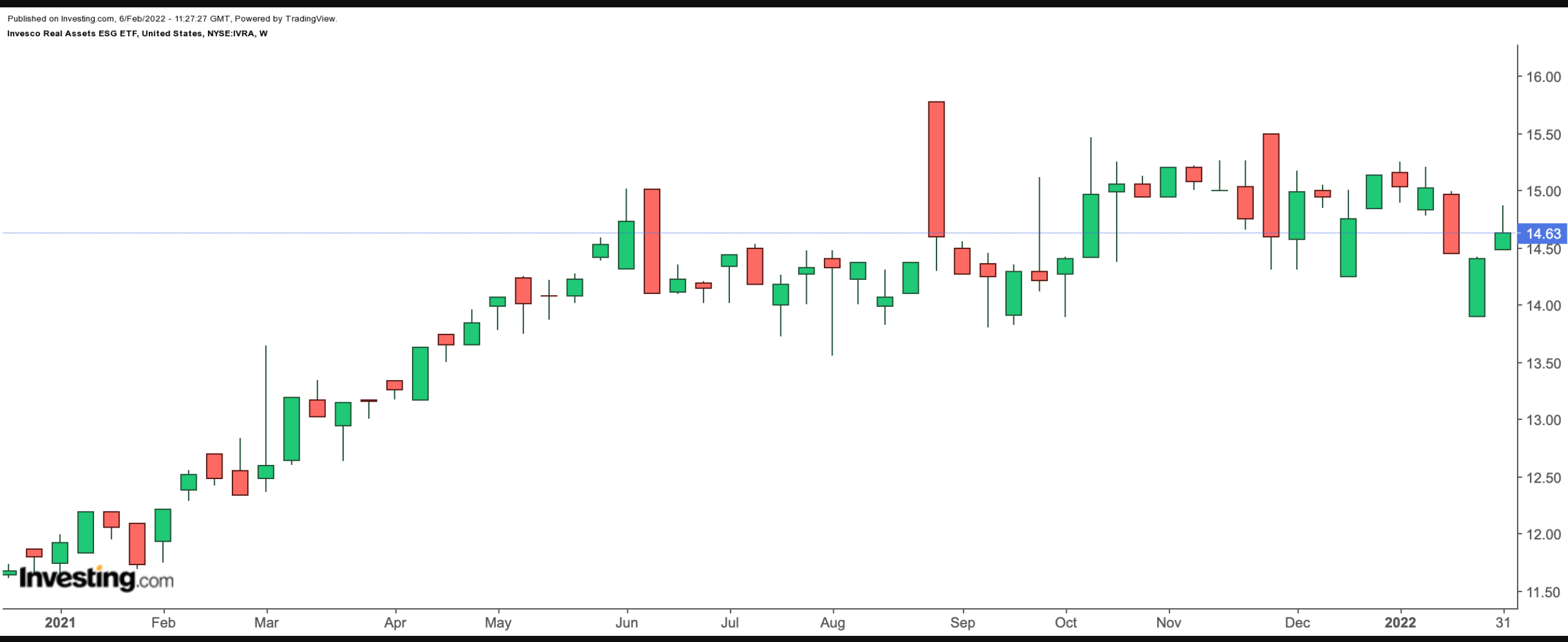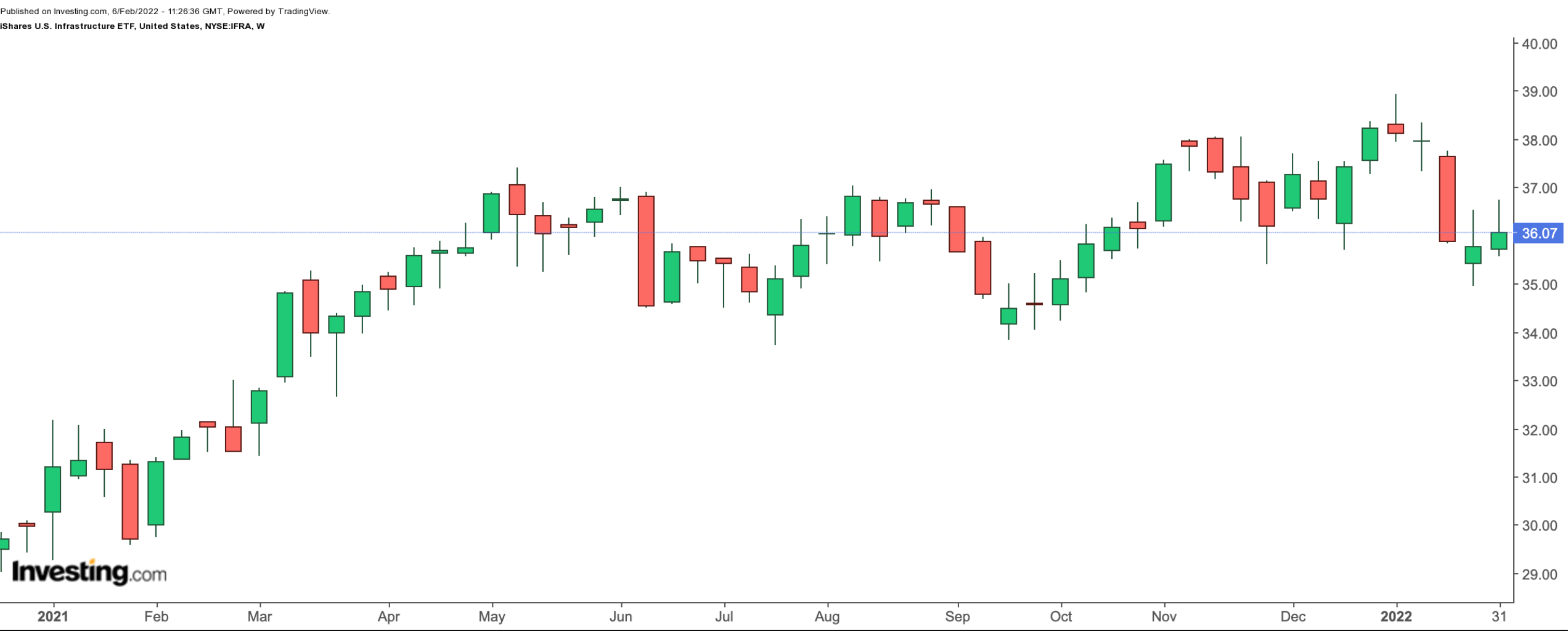Wall Street is seeking insulation from inflation by focusing on real assets such as real estate, commodities, natural resources, precious metals or infrastructure investments. Supply and demand dynamics understandably affect the prices of such tangible assets.
Another important factor, however, is the rate of inflation. Prices of real assets, which have intrinsic value, tend to increase as inflation goes up. Research by BlackRock highlights: “…leases and revenue streams are directly or indirectly linked to inflation. When inflation is accompanied by good economic growth, demand rises for real estate space and economic infrastructure.”
Meanwhile, JP Morgan suggests:
“Real estate investors typically benefit from a natural hedge against inflation… [W]e believe equities of companies that are more directly tied to economic activity and interest rates would likely outperform. Companies with pricing power in cyclical industries such as industrials and materials could see robust revenue growth.”
Therefore, diversifying into exchange-traded funds (ETFs) that hold real assets could be a way to protect long-term portfolios in these uncertain times. Thus, today's article introduces two funds that could appeal to readers who want to benefit from the 'store of value' of different real assets.
1. Invesco Real Assets ESG ETF
- Current Price: $14.63
- 52-week range: $12.08 - $15.78
- Dividend yield: 2.02%
- Expense ratio: 0.59% per year
Our first fund, the Invesco Real Assets ESG ETF (NYSE:IVRA), invests in shares of North American companies with real assets. Fund managers also pay attention to environmental, social and governance (ESG) factors and standards.
The fund was first listed in December 2020, and net assets stand at $2.8 million. In other words, it is a relatively new and small fund.

IVRA is an actively-managed non-transparent ETF—a relatively new generation of funds. Unlike most ETFs, non-transparent funds do not have to disclose their daily holdings.
By not disclosing their portfolios, fund managers expect less copying or predicting of the investment strategy by other traders. In other words, the risk of front-running might be mitigated. As a result, the ETF's performance might improve. However, we should note that their expense ratios tend to be higher.
Fund managers typically reveal a proxy (to tracking) basket of shares daily. However, they do not have to be the same as the fund’s actual portfolio.
As of Feb. 4, IVRA had 54 holdings. At the time, real estate names had the highest slice in the tracking basket with 55.02%. Next came energy (20.71%) and materials (13.32%).
The leading names in this proxy basket are comprised of real estate investment trusts (REITs) Prologis (NYSE:PLD), UDR (NYSE:UDR), American Tower (NYSE:AMT) and SBA Communications (NASDAQ:SBAC) as well as energy names Enbridge (NYSE:ENB) and PPL (NYSE:PPL), which is a UK-based utility group with operations in the US as well. Finally, among materials names, we saw West Fraser Timber (NYSE:WFG) and Nutrien (NYSE:NTR), which provides crop inputs.
In the past 12 months, the ETF returned 22.1%, and hit a record high in late August. But since the start of the year, IVRA is down 3.3%. Interested investors might want to research the fund further with a view to buy around $14.
2. iShares US Infrastructure ETF
- Current Price: $36.07
- 52-week range: $30.57 - $38.94
- Dividend yield: 1.73%
- Expense ratio: 0.30% per year
In November 2021, US President Joseph Biden signed an important bipartisan infrastructure bill into law. The Brookings Institution highlights that the bill “represents a longer-term patient approach to rebuilding American competitiveness through infrastructure… This spending touches every sector of infrastructure, from transportation and water to energy, broadband…”
The iShares US Infrastructure ETF (NYSE:IFRA) gives access to US infrastructure companies that are likely to benefit from this increased spending in the coming years. These names come from owners and operators, which include railroads and utilities; and enablers, which include materials and construction businesses. The fund started trading in April 2018.

IFRA, which has 149 holdings, tracks the NYSE FactSet US Infrastructure Index. The top 10 holdings account for about 8.5% of net assets of $789.6 million.
In terms of sub-sectors, we see utilities (44.17%), industrials (28.63%), materials (19.65%) and energy (6.14%). Among the top names are Allegheny Technologies (NYSE.ATI), Unitil (NYSE:UTL), EnLink Midstream (NYSE:ENLC), NiSource (NYSE:NI), ONE Gas (NYSE:OGS) and Atmos Energy (NYSE:ATO).
Over the past year, IFRA went up by 18.7%, and saw an all-time high (ATH) in January 2022. But since then it has lost about 7.5% from that peak price. P/E and P/B ratios are 18.12x and 2.24x.
We like the equal-weight methodology of the index and the diversity of the fund. Interested buy-and-hold readers could regard the recent decline as a better entry point into IFRA.
